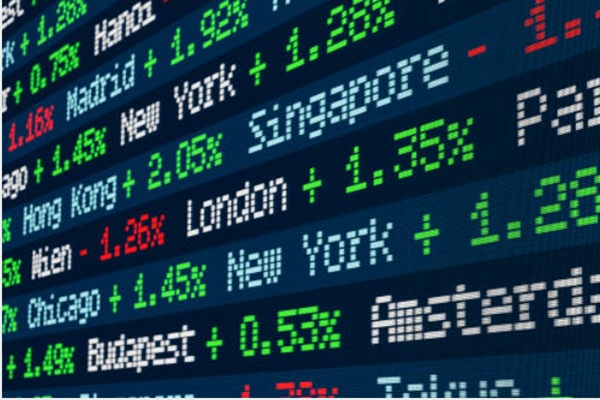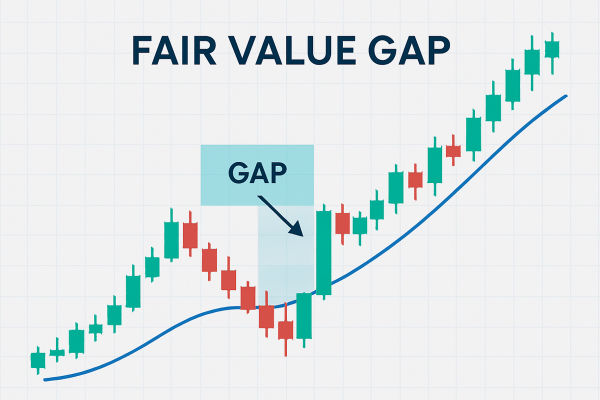Wondering how many trading days are in a year? For 2025, there are 251 trading days after accounting for weekends and public holidays. This article explains the calculation of trading days in a year and discusses the impact of market holidays on trading strategies.
Key Takeaways
In 2025, there are a total of 251 trading days after accounting for weekends and 10 public holidays.
Market holidays significantly impact trading strategies, with traders needing to account for variations in trading days due to holidays observed on adjacent weekdays.
Understanding global trading hours and extended trading periods enhances traders' ability to coordinate activities and react quickly to market movements.
Number of Trading Days in 2025

The answer to "How many trading days are there in 2025?" is 251, considering weekends and public holidays. With 365 days in a year, the calculation starts by subtracting the 104 weekend days, leaving 261 days. Next, we deduct the 10 market holidays observed in 2025, bringing us to the final tally of 251 trading days.
Knowing the number of trading days assists in planning trading strategies, as it directly affects trading volume and market behaviours. For example, November 2025 has fewer trading days due to the Thanksgiving holiday, potentially affecting market liquidity and volatility. These details aid traders in anticipating market movements and adjusting their strategies accordingly.
Major Market Holidays in 2025

Market holidays can significantly impact trading strategies. In 2025, the New York Stock Exchange (NYSE) observes the following 10 holidays:
New Year's Day: Wednesday, 1 January
Martin Luther King Jr. Day: Monday, 20 January
Washington's Birthday (Presidents' Day): Monday, 17 February
Good Friday: Friday, 18 April
Memorial Day: Monday, 26 May
Independence Day: Friday, 4 July
Labour Day: Monday, 1 September
Thanksgiving Day: Thursday, 27 November (with an early closure at 1:00 PM Eastern Time on Friday, 28 November)
Christmas Day: Thursday, 25 December
These holidays reduce the number of trading days and can affect trading volumes. Holidays falling on weekends are typically not observed on adjacent weekdays by the NYSE, except for Independence Day and Christmas Day, which are observed on the preceding Friday if they fall on a Saturday and on the following Monday if they fall on a Sunday. Traders should be aware of these variations to avoid surprises.
Regular Trading Hours Across Stock Exchanges
The U.S. stock market operates from 9:30 AM to 4:00 PM Eastern Time, Monday through Friday, for both the NYSE and NASDAQ. This 6.5-hour window, known as stock market trading hours, is crucial for day traders and swing traders.
Stock exchanges worldwide have different trading schedules. For instance, the Tokyo Stock Exchange operates in two sessions: 9:00 AM to 11:30 AM and 12:30 PM to 3:00 PM, with orders starting at 8:00 AM and 12:05 PM respectively.
Understanding these schedules helps traders coordinate activities across markets, maximising opportunities and managing risk.
Extended Trading Hours
Extended trading hours, typically from 4:00 AM to 8:00 PM Eastern Time, allow traders to buy and sell stocks outside traditional hours, offering more opportunities to react to market-moving news and events.
By 2025, the NYSE Arca exchange is expected to operate 22 hours a day, reflecting the trend of extended trading periods. This extended window benefits traders needing to react quickly to overnight news or who have commitments during regular hours.
Pre-Market Trading
Pre-market trading usually starts at 4:00 AM Eastern Time and is most active between 8:00 AM and 9:30 AM, allowing traders to react to overnight news before the regular session.
Liquidity during pre-market sessions is often low, leading to misleading price movements. Traders should be cautious and use this time for informed decisions rather than chasing volatility.
After-Hours Trading
After-hours trading typically runs from 4:00 PM to 8:00 PM, with significant volume before 6:30 PM. This period allows traders to react to earnings reports and other post-session news.
Volatility is generally higher during after-hours trading due to lower participation and market depth. Traders should be mindful of these conditions to avoid pitfalls and make profitable trades.
How to Calculate Trading Days
To calculate trading days in a year, start with the total calendar days and subtract weekends and holidays. For 2025, begin with 365 days, then subtract 104 weekend days and 10 holidays, resulting in 251 trading days.
Market holidays and special events can also affect the number of trading days. Understanding this calculation helps traders effectively plan their schedules and strategies.
Comparison of Trading Days Globally
Trading days vary globally due to different holidays and market practices. In the U.S., the stock market typically operates around 251 trading days annually, making stock market trading an essential activity for investors.
In contrast, the Tokyo Stock Exchange has about 245 trading days annually due to national holidays. European exchanges like the London Stock Exchange generally have around 250 trading days per year. Understanding each region's trading schedule helps traders develop better strategies for global market participation.
Best Days of the Week for Trading

Research shows that:
Tuesdays and Wednesdays are the best days for trading based on historical performance.
Tuesday tends to yield the highest average daily returns, about 0.062%.
Mondays and Fridays generally provide the weakest returns.
Markets often stabilise by midweek, creating a favourable environment for trading in stock markets and financial markets.
Optimal Times of the Year for Trading
The prime period for stock trading generally extends from November to April, while September often sees market declines. Certain stocks may exhibit seasonal price patterns, influencing price movements and creating predictable opportunities.
Certain holidays, such as Independence Day and Thanksgiving in the U.S., often align with seasonal trading strategies based on historical performance. Similarly, in other global markets, holidays like UK bank holidays or Japan's Golden Week can impact trading volume and market liquidity.
Day trading activity peaks in the last quarter of the year, as traders capitalise on year-end market movements.
Factors Affecting Trading Days

Trading days are typically Monday to Friday, excluding public holidays. However, special circumstances, including national days of mourning, global economic crises, or technical failures, can lead to unexpected market closures.
Liquidity often decreases during public holidays, which can cause increased price volatility. Additionally, a leap year may increase trading days if the additional day falls on a weekday.
Impact of Market Holidays on Trading Strategies
Trading strategies can be adjusted around holidays to take advantage of observed increases in market returns. The holiday effect is a minor anomaly considered in broader trading strategies.
The last trading day before a long weekend often has higher average daily returns than regular days. Understanding these patterns helps traders optimize strategies around market holidays for better performance.
Conclusion
For 2025, there are 251 trading days in the U.S. stock market, after accounting for weekends and public holidays. Understanding these trading days is crucial for planning investment strategies, managing risk, and taking advantage of global market movements.
Traders should also consider market holidays, extended trading hours, and pre-market and after-hours sessions to refine their strategies and optimise trading performance.
By staying informed about trading schedules and adjusting strategies accordingly, traders can navigate the markets more effectively and take advantage of every trading opportunity available.
Disclaimer: This material is for general information purposes only and is not intended as (and should not be considered to be) financial, investment or other advice on which reliance should be placed. No opinion given in the material constitutes a recommendation by EBC or the author that any particular investment, security, transaction or investment strategy is suitable for any specific person.










